Are the Benefits of Green Tea the Medical "Magic Bullet" everybody's been talking about?
~ ~ ~
Wanna know how to pick out the Best Tea and then learn How to make it Properly so you don't ruin it?
~~~
Get the Facts right here...
Green Tea is made from the leaves of a small evergreen shrub or tree called Camellia Sinensis. Although it can grow to over 30 feet tall in the wild, on plantations it is normally trimmed to a height of no more than 2 meters. Most are maintained to around 3 feet tall for convenient picking.
These plants grow in warm climates but can flourish in elevations up to 7,000 square feet. And actually, the best teas are from plants that are grown in higher elevations where the leaves are allowed to mature more slowly yielding a richer flavor. Although it can take 2 1/2 to 5 years before a plant is ready or picking, once it does it can produce leaves for a hundred years.
For harvesting, usually only the bud and the first 2 or 3 leaves are picked. At lower altitudes the leaves can be harvested every week; in higher altitudes, every 2 weeks.
The tea is harvested by "tea pluckers", the best of whom can pick 40 pounds per day. Enough to make 10 pounds of tea.
Origins of Green Tea
The legendary origins of green tea goes back over 4,000 years to China. The first being brewed in 2737 B.C. during the reign of emperor Chen Nung. Legend has it that leaves from a wild tea bush fell into a pot of water he was boiling.
The
first recorded mention of tea was in a contract for slaves called "Tan
Yuch", written by Wang Pa, poet laureate to Emperor Husan in 59 B.C.
And one of the first notable books ever written on it was written by Lu Yu and is called "Tea Classic" or "Cha Jing". It was written around 780 AD and talked about the cultivation and consumption of tea and how one could enjoy a fine cup.
Green Tea was brought to Japan by Myoan Eisai, a Japanese buddhist priest who also introduced the Rinzai school of Zen Buddhism. Buddhist monks quickly embraced it and used it to help them remain alert during their meditations. Later they created a drinking ritual that 200 years later was developed into chanoyu, the Japanese tea ceremony, by master Sen-no Rikyu (1521-1591).
From Japan, tea culture spread to Java, the dutch west indies and other areas. By the 16th century, English traders sailing to and from the Far East introduced Europeans to the drink. By the 18th century, it was the national beverage in England.
Later, tea crossed the Atlantic to North America, and was made an important part of American history by the Boston tea party.
Several major innovations in consumption happened in the U.S. The first in 1904 when Thomas Sullivan sent his customers samples in little silk bags which they conveniently found could be used to brew one cup of tea.
Another major innovation occurred in 1948 when instant tea was developed.
Today, green tea's popularity only seems to be growing with all of the interest and claims for the health benefits of consumption and the agreement from the medical community that many of the claims are true.
Benefits of Green Tea
For thousands of years and across almost every country in the known world, Green Tea has long been praised for its purported ability to improve health.
From eradicating simple bacterial and viral infections to controlling or curing degenerative conditions such as stroke, cancer, cardiovascular disease, and osteoporosis the claims are many and some hard to believe.
But is there actually any truth to the claims?
I don't know. But let's try to find out.
To be thorough, let's start by looking at what claims have been made by various cultures in the past; from a historical perspective .
Historical Health Benefits of Green Tea
The earliest references on the health effects can be found in a 4700 year old Chinese document called "The Divine Farmer's herb-root classic" written by Shennong, the legendary man known to be China's father of medicine.
In it he discusses infusions made from Camellia Sinensis that are useful for treating conditions such as tumors, abscesses, lethargy, and bladder ailments.
Today in Chinese culture, it is said to be the most beneficial of all herbs and the only one that can be consumed daily. As a matter of fact, it is also said that you can go a day without food, but not a day without tea.
The Chinese surely do believe it's benefits.
Following is a list of some common folk/holistic remedies practiced by several cultures including the Chinese and Japanese.
Folk and Holistic Remedies
- Use to ease itching and swelling
- Use strong tea as a disinfectant on cuts and bruises
- Use strong tea to treat athlete's foot
- Chew rehydrated tea leaves to cleanse the breath
- Use warm tea to wash the face to reduce pimples and rashes
- Use strong tea to rinse the hair to add shine and softness
- Press rehydrated tea leaves on tooth to relieve toothache
- Cool and heal sunburned skin by soaking a towel in cold green tea and placing it on affected area of the body
- Drink it to stop thirst and stimulate appetite
- Use to improve digestion and as a diuretic
- Drink to remove phlegm
- Drink to reduce fat and high cholesterol
Although there are many more, you get the idea.
But what does modern medicine have to say about the benefits of green tea?
Is there actually anything to all of the hype? Let's see if we can find out.
Benefits of Green Tea according to Modern Medicine
There are 3 main varieties of tea -- black, green, and oolong. They all 3 come from Camellia Sinensis. The difference is in the way they are processed. Green tea is made from unfermented leaves and contains the highest level of antioxidants called polyphenols.
Antioxidants are what fight free radicals. The damaging compounds that damage DNA, change cells and can even cause cell death.
Many scientists believe that free radicals are what cause the aging process and are to blame for many other health problems including heart disease and cancer.
Antioxidants, like the polyphenols that are present in tea, can help to neutralize free radicals and may reduce or even eliminate the damage that they can cause.
This potential that it has is what drives all of the excitement and hope in the scientific testing community and the world.
And also because of this, it has been extensively tested. The following are just a few of the results from some of these tests and studies.
High Cholesterol
High cholesterol is one of the contributing factors along with fat, calcium and other substances, that lead to Atherosclerosis or a buildup of plaque inside the arteries. This, if left untreated, will eventually lead to a heart attack or stroke.
Studies have shown that green tea does lower the risk of atherosclerosis by lowering LDL cholesterol, triglycerides, and fibrinogen (a protein in the blood that causes it to form clots), while at the same time improving the ratio of LDL (bad) to HDL (good) cholesterol.
One animal study showed that polyphenols may block cholesterol from being absorbed into the intestine and may also help the body rid itself of cholesterol.
Another study of male smokers showed that it reduced their levels of "LDL" or bad cholestrol.
Cancer
Several population based studies have shown that green and black tea may help prevent cancer. For instance, in Japan where green tea is regularly consumed by the bulk of the population, cancer rates tend to be very low.
While this may not be definitive evidence of it's benefits for cancer prevention, medicine and science are starting to back these findings.
In the last 10 years, it's ability to help prevent cancer has been gaining support due to cell culture, animal and clinical studies.
As a matter of fact, the evidence is so overwhelming that the chemo-prevention branch of the National Cancer Institute developed a plan for creating tea compounds to be used as cancer chemo-preventive agents in human trials.
The evidence must be pretty strong if the National Cancer Institute is working on plans for human trials.
To a cancer cell, whom we will equate to being an Apollo Creed, tea is the equivalent of a Rocky Balboa.
And one of the reasons is this.
Laboratory cell culture studies show that polyphenols are powerful triggers of cell suicide in cancerous cells and also help in preventing cancerous cells from dividing and replicating.
This is assumed to be due to the antioxidant effects of catechins, namely EGCG (epigallocatechin-3-gallate). In a November 2004 issue of Mutation Research, EGCG's protective antioxidant effects against several substances that cause cancer was found to be 120 percent stronger than vitamin C.
Green tea also inhibits angiogenesis (the development of new blood vessels) in cancer cells. By doing this, it can basically starve the cancer cell.
Studies are also showing that tea works at the genetic level, shutting off the genes in the cancer cells that are involved in cell growth while at the same time telling it to self destruct.
A potent one-two punch.
While the jury may still be out, the evidence of it's ability to help prevent and fight cancer does look awfully promising.
Heart Disease
Research has shown that green tea reduces the risk of heart attacks by reducing cholestrol and triglyceride levels. In fact, researchers estimate that the risk of heart attack reduces by 11% with the consumption of 3 cups of tea per day.
In a separate Japanese study, they found that those drinking 5 or more cups per day were found to be 16% less likely to suffer from a heart attack. The finding were so significant that the researchers concluded that:
"the more green tea patients consumed, the less likely they are to have coronary heart disease".
Diabetes
Animal studies suggest that green tea may help prevent Type I diabetes and slow the progress once it has developed.
Type I diabetes is a condition in which the body makes little or no insulin. Without insulin, the body cannot convert glucose or sugar into energy causing the glucose to build up resulting in a condition called hypoglycemia.
Population and animal studies are also showing it may help to prevent Type 2 diabetes.
Type 2 diabetes is where the body is not producing enough insulin or the cells are not responding correctly to the insulin. This is known as insulin resistance.
These studies show that there is an improvement in glucose tolerance and insulin sensitivity in individuals with diabetes when they consume green tea.
In one 12 week study, diabetic rats were given green tea and at the end of the 12 weeks, they had lower fasting levels of glucose, insulin and triglycerides and their ability to respond to insulin and blood sugar greatly increased.
In another animal study they compared the effects of being on either a western diet, a vegetarian diet, or a Japanese diet. Blood sugar levels were highest on the western diet followed by the vegetarian diet and the lowest was on the japanese diet.
When supplemented with green tea, the blood sugar dropped in all 3 of the diets again with the Japanese diet being the lowest, but they also had the lowest triglycerides and cholesterol as well as the highest levels of omega-3 fatty acids.
The researchers concluded that eating a Japanese diet combined with drinking green tea was a good way to prevent Type 2 diabetes.
Weight Loss
Clinical studies are suggesting that green tea and green tea extract may boost metabolism and help burn fat. And specifically, visceral fat --- the fat that accumulates in tissues lining the abdominal cavity. This is important because visceral fat is highly associated with Type 2 diabetes.
Green tea contains 3 substances that promote this fat loss: Catechins, theanine, and caffeine.
In a January 2004 issue of In Vivo, mice were fed diets containing green tea powder for 16 weeks and visceral fat was reduced by 76.8 percent. A significant reduction by any standard. The levels of triglycerides were reduced also.
In a human study published in January 2005 by the American Journal of Clinical Nutrition, 38 normal to overweight men were given one bottle of green tea to drink per day for 12 weeks. At the end of the 12 weeks they all had lower body weight, BMI (body mass index), and waist circumference than those men who were given oolong tea in the same study.
Based on these studies, it does look like that green tea is beneficial in promoting weight and fat loss.
So are the Benefits of Green Tea the "Magic Bullet"?
It does seem like that most of us, at least at some point or another in our lives, do end up looking for some kind of magic pill, or silver bullet when it comes to trying to maintain our health and extend our lives.
Maybe it comes with age. Or maybe the realization that we are not going to live forever. I know I wasn't looking for it when I was 19. But at 51? Uh, Yeah. And looking a lot more often too.
And while most everything that claims to be a "magic bullet" never seems to work quite as advertised, one that may actually be the real deal is green tea.
Its been around for thousands of years during which time it has been documented time and again for being almost every culture's go-to super herbal remedy at one time or another.
And you know what?
The few medical and scientific studies that are posted above --- of which there are hundreds if not thousands more --- are backing up what almost every culture has been saying for hundreds, if not thousands of years...
It may not be the "be-all, cure-all", but the benefits of green tea we've just covered sure is getting pretty darn close.
Picking the Best Green Tea
There are many different factors that can come into play when trying to pick a tea.
Factors like where the tea was grown, what parts of the plant were used, whether it was picked in the spring or later in the fall, and whether it was grown in the sun, the shade or partial shade. All of these things and more are considered in determining the grade or the quality of a tea and is reflected in how it will taste.
In a lot of ways, it is similar to picking a fine wine.
Roll into the mix that taste is subjective and determined a lot by an individuals personal taste preferences, and everything starts becoming more difficult than just picking the most expensive tea grown in the most obscure, remote regions of the world where it has to be picked by mountain goat people and hauled out on donkey back --- (how I do love to ramble... :-)
And where I might actually like the most expensive high quality tea available, that taste may not necessarily appeal to you. You may prefer a more common working man's tea. Your pocket book may prefer it too.
Of course, I'm probably not telling you anything you may not already know, but I thought it might need to be put out there.
With all of that said, the best thing that we can probably do is try to describe the different elements or factors that make up a good tea so that you can get educated and be actively involved in the decision making process.
So you can pick the best green tea --- for you.
Let's now talk about the different things to look for in determining the quality of a tea.
Where the best Green Tea is grown
You know, I'm going to be a little prejudice here and limit this discussion to Japanese green teas. After all, it IS where the best green teas in the world comes from.
Ok. Before you start sending me hateful emails ranting and raving about how the aboriginal cow dung green tea in Australia is the best tea in the world (I made that up; there actually is no such thing as aboriginal cow dung green tea although it does sound deee-lish :-), give me a minute to explain.
There are so many teas in the world that it would be near impossible to pick from all over the world. So since my 80 year old mother is Japanese and I grew up on Japanese variety, I thought it would be the best tea to talk about. And I do honestly believe that Japan does have some of the finest, if not the finest green teas in the world. So we can't go wrong with that.
Time to talk about where it is grown.
One of the places that the best green tea in Japan is said to be from is the Yame region of Fukuoka Prefecture. The picture above on the left has the Fukuoka Prefecture in red compared to the whole map of Japan. And on the right the Yame region highlighted within the Fukuoka Prefecture.
The other place is said to be the Uji region of Kyoto. The picture above on the left shows the Kyoto Prefecture highlighted in red in relation to the entire country of Japan. On the right we have the Uji region within that prefecture.
Generally, when trying to pick out the best Japanese teas just know that these 2 regions are known for having the best.
Now, highlighted above in red is the Shizuoka Prefecture. It produces 40% of the raw tea leaves that come from Japan. It is about an hour south of Tokyo by bullet train.
Below is a tea plantation in Nihondaira, Shizuoka Japan.
They do grow good tea in this prefecture, although it may not be the exceptional quality of the Yame and Uji regions.
When the Tea is Harvested
There are usually 3 or 4 harvests per year with the first occuring in late April or early May. Generally, the earlier the tea is harvested the better the quality and the more expensive the tea.
The first picking or harvest is sometimes also called the first flush and is referred to as "Shincha". As you move on to the 2nd, 3rd, and 4th harvests they are considered lesser and lesser quality.
You will need to know when your tea was harvested. If you want to pick out the best tea looking at it from this angle, just remember "Shincha" or first harvest. Other than that, just know that you are getting less quality the later in the season the tea is picked.
Was the Tea grown in Full sun or in the Shade?
Whether a tea has been grown in full sun or in the shade does change the quality and price of the tea.
Putting a green tea under shade causes several things to happen. For one, it causes the amino acids (Theanine) and caffeine to increase.
Theanine has been studied for its ability to reduce physical and mental stress and boost cognitive performance and mood. Some beverage manufacturers are selling drinks containing Theanine and marketing them as drinks that help focus and concentration or as having relaxation properties.
Another thing that shade does is reduce the amount of catechins (which causes the bitterness in tea) giving the tea a slightly sweet flavor.
Teas like Gyokuro which are put under shade for 3 weeks prior to harvest have to normally have structures built over the tea plants to shade them during this time. This adds quite a bit of cost to this type of tea usually making it the most expensive of Japanese teas.
This is different from Sencha tea, which is grown in the full sun the entire time before harvest and so costs less than Gyokuro because of the reduced labor costs.
When looking for your own "best green tea", know of this difference and try teas that have been in both the full sun and also the shade (like Gyokuro and Sencha) and see which you prefer.
This will also allow you to see if your pocket book is willing to pay for the more expensive Gyokuro.
What part of the Tea Plant the tea comes from
As you have seen so far, not all teas are created equally. And the parts of the tea plant your tea comes from is yet another factor.
High quality teas like Gyokuro or Sencha come from the buds and first few leaves of the tea plant. There is also tea that comes from the opposite end of the spectrum. These teas can contain parts of the tea plant besides the bud and first few leaves.
For instance, Kukicha (stalk tea) is a byproduct of Gyokuro or Sencha and is made from the stems, stalks and twigs. As you can guess, this is not a high quality tea.
Another is Haracha (raw green tea). It contains all parts of the tea plant. Also not a high quality tea either.
Since we are talking about trying to find or pick out the best green tea, we won't focus to much on these types of teas. They are not in the best green tea category.
Green Tea Processing
The image below is a good one to look at if you want to see the basic steps in cultivating, harvesting and processing green tea.
Some of the bigger items below that increase the cost of tea are "Shade Grown"(which sometimes requires building shading over tea plants which is labor intensive) and "Grinding" for Matcha.
Now that we have a foundation for understanding what determines the quality of a green tea, let's continue our learning and go over the "Types of Green Tea" in the next section before we try to pick the best green tea for you.
Types of Green Tea
Shaded Green Teas
Gyokuro ("Jade Dew")
Gyokuro is the finest and most expensive of Japanese green teas. Part of the reason for the cost is the extra effort it takes to shade the tea plants (around 90% shading) for the last 20 days before harvest. This effort may include building structures to provide this shade.
And there is good reasoning for this shading. For one it causes the amino acids (Theanine) and caffeine to increase. And secondly, it reduces the catechins (which causes the bitterness) which gives the tea a slightly sweet flavor.
This might be roughly similar to reducing the tannins in a wine. (The taste that makes you want to pucker your lips when you drink it).
Kabusecha ("Covered Tea")
Kabusecha is grown in the shade (around 40%-50% shading) just like Gyokuro, but not for as long. Usually around 1 week. It does have a more delicate flavor than Sencha and is somewhere between the taste of Gyokuro and Sencha.
Matcha ("Powdered Tea")
Matcha is a shaded tea that is finely ground in its final step. Given that it gets the same amount of care and preparation as Gyokuro (like 90% shading for 2-3 weeks), but with the additional grinding at the end and you can guess that the price does reflect this additional processing.
Matcha also is not rolled but is rather dried and then put in a wind tunnel type machine that breaks the leaf part away from the vein making a byproduct called "Tencha". The Tencha is what is ground to make Matcha.
Matcha is the tea used in the precise and traditional Japanese tea ceremony.
There are a couple of different types of Matcha.
Usucha, which comes from the sprouts of tea plants that are less than 15 years old and Koicha which is a thick consistency tea that comes from the buds and leaves of tea plants that are at least 30 years old.
If you are new to green tea and want to try Matcha, it would probably be best to start with Usucha.
Full-Sun Green Teas
Sencha ("Decocted Tea")
Sencha is made from the first and second flush (harvests) of tea leaves that are given full sunlight and no shading.
It is the most common type of green tea in Japan.
In most cases, even the second flush or harvest of this tea is a very good economical introduction to fine quality Japanese teas and is probably better than most tea you will find in a store or on the internet.
A variation on standard Sencha is Fukamushicha ("Long-steamed green tea") which is essentially Sencha steamed twice as long as usual. This gives the tea a deeper color and produces a slightly fuller flavor.
And there is also a lower grade of Sencha picked as the 3rd or 4th harvest between summer and autumn called Bancha.
Ok. I think we are Ready.
So, what is the Best Green Tea...
For You?
You know what? There are other green teas that we could go over. But honestly I don't think we would gain much at this point by doing so.
This is, after all, about picking the best green tea. And I think we have roughly already gone over those.
Any others would be lower quality, rarely consumed, or just a waste of time at this stage of your journey.
With that, let's try to whittle things down for you.
If I were you, I would start with the best quality green tea that I could afford. And I know that cost will be a limiting factor for most people at some point, but you'll have to decide what that is.
So let's start from the top:
- If you can afford Gyokuro I would buy that first. 1st flush if you can.
- Second pick, Kabusecha. I would pick this one second if Gyokuro is out of your price range. You would still get a taste of something close to Gyokuro at a little less of a price.
- Next, I would pick a Sencha or Fukamushicha if the two above still were cost prohibitive. And make sure you pick "Shincha" (first harvest) or 2nd harvest if you can.
- And lastly, pick a Bancha (3rd or 4th harvest Sencha essentially). But like I mentioned before, even our last pick here is probably going to be better than any other tea you would pick up in a store.
The reason I recommend picking the best you can afford, especially if you are just starting out with Japanese green tea, is so you can experience what excellent tea tastes like. It will be like no other you have ever tasted and you will probably be surprised...and hooked.
Afterwards, you can pick a good daily drinker, like one of the Sencha's mentioned above (3 or 4) that is more affordable and keep the Gyokuro or Kabusecha for special occasions or as a treat :-)
Of course, you can't keep these premium quality teas for very long before you drink them, so don't wait too long for a special occasion...
I have to admit. I'm excited for you. You are going to so love these teas.
Just pick the best you can in the list above...and you'll never look at another green tea the same again...
How to make Green Tea
To make good green tea you will need to have a quality Japanese teapot. Tokoname is an excellent name to look for.
Next, let's do a light review of the steps. You will have to:
- Boil the water;
- Preheat the cups and teapot;
- Get the water temperature down to the correct steeping temperature for the tea you are brewing;
- Measure the correct amount of tea for the type of tea you are brewing;
- Combine the tea and water in the teapot for the right number of minutes;
- Empty the teapot of all tea/water when you pour the tea so nothing remains that will get bitter for your second infusion
Now let's take these steps in detail.
1. Water - Your tea can only taste as good as the water you use. If you are going to use tap water from your sink and it does not taste very good, consider using bottled water. Either way, then boil your water for 4 or 5 minutes to try to eliminate any funky tastes.
2. Pour the boiling water into the teapot and also into the teacups to the level of the amount of tea you want to drink. This pre-warms the teapot and the teacups and also pre-measures the water for your tea.
3. Now, here is where we will lower the water temperature to the correct temperature for the tea you brewing.
Look at the chart below. The teas are listed in order from top to bottom from highest quality to lowest quality. Notice that the higher quality the tea, the lower the water temperature.
This is very important. If you steep say Gyokuro which is best at 100F, at the temperature for say High Grade Sencha (180F), the delicate leaves of the Gyokuro will rebel and your tea will taste bitter.
The fine and delicate flavors have to be coaxed out of the more premium teas.
If you don't do this, then you will think that Gyokuro is not very good tea. But in reality you actually cooked it to death and ruined it.
Let's try to avoid that.
So. Water boils at 212F (100C). In step 2 above when you put the boiling water into your tea cups, the time count started.
Let the water in the teacups stand and cool for:
|
Type of Tea |
Time to Cool in Teacups |
|
Gyokuro |
3 minutes to bring temperature to 100F |
|
Superior Sencha |
2 minutes to bring temperature to 140F |
|
High Grade Sencha |
1 minute to bring temperature to 180F |
|
Middle Grade Sencha |
30 seconds to bring temperature to 200F |
During this time you can measure out the amount of tea you need based on the chart above, according to the type of tea you are brewing and the amount of water in your teacups.
You need to know the number of ounces your teacups have in them when filled to your normal drinking level to do this accurately.
4. When the cooling time is up, pour the water out of the teapot, add the tea you already have premeasure to it, and then add all of the water from the teacups to the teapot.
5. Cover and let steep per the chart above based on the tea you are brewing.
6. When this time is up, pour a little tea into first teacup then move on to each of the other teacups in turn. The point is to pour only a little tea into each cup so each gets as equal a strength of tea as possible.
If you poured the first cup full and then moved on to the next cup the the first cup would be stronger than each of the remaining cups making the last cup get the weakest flavored tea.
So moving around the cups, pouring a little in each guarantees equal strength and flavor all the way around.
7. Completely empty the teapot so that no tea remains in the pot. The reason is anything that is left behind will keep steeping which will eventually turn bitter making the next infusion bitter.
8. For the second infusion, brew at the same temperature but you don't have to wait for steeping as the tea leaves are already open. If you wait, then the tea will most likely be bitter.
And there you have it!
Like this Page?
|
|
Follow me on Pinterest

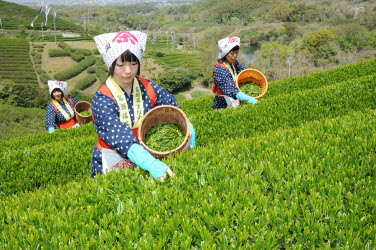
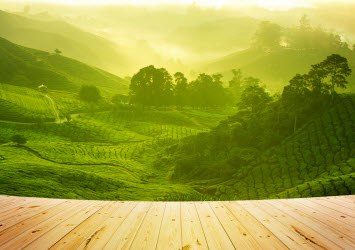
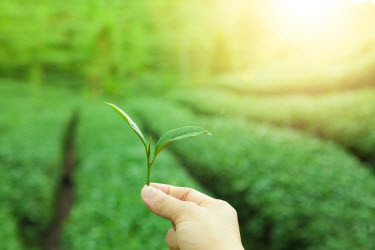
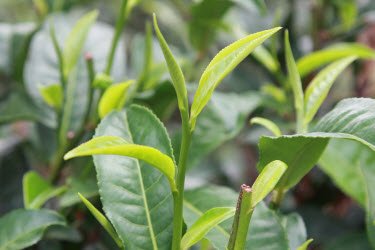
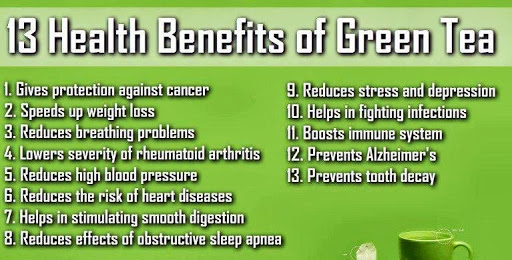
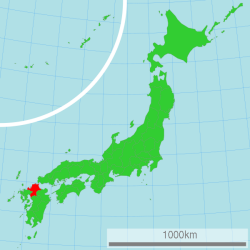
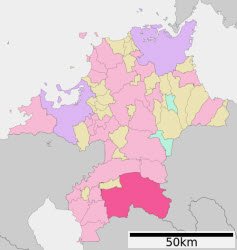
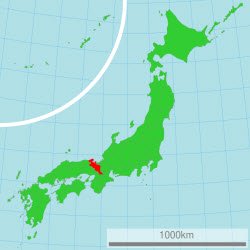
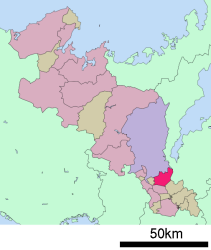
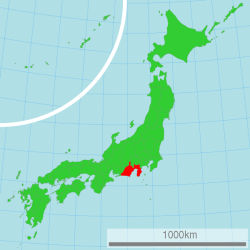
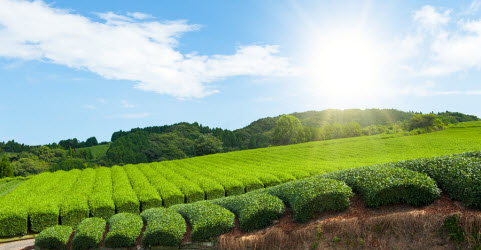
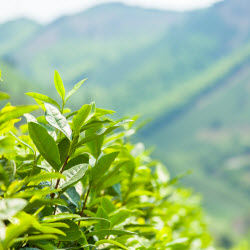
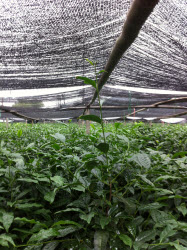
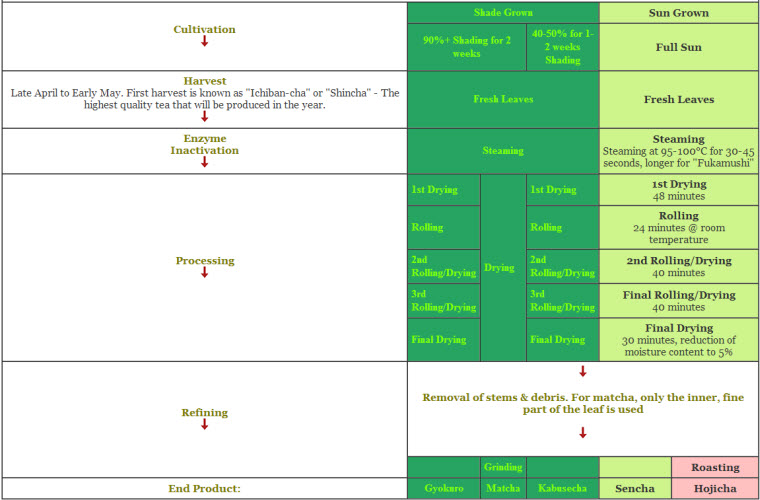
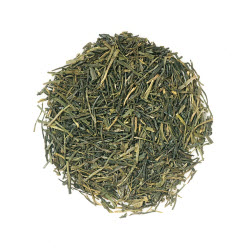
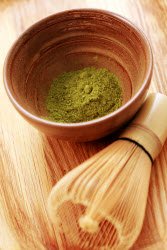
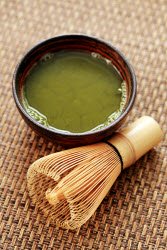
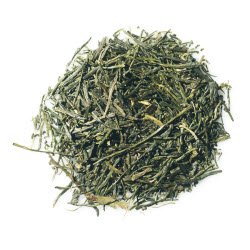
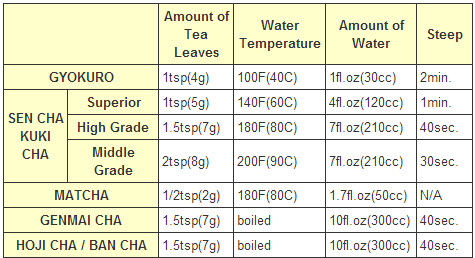







New! Comments
Have your say about what you just read! Leave me a comment in the box below.